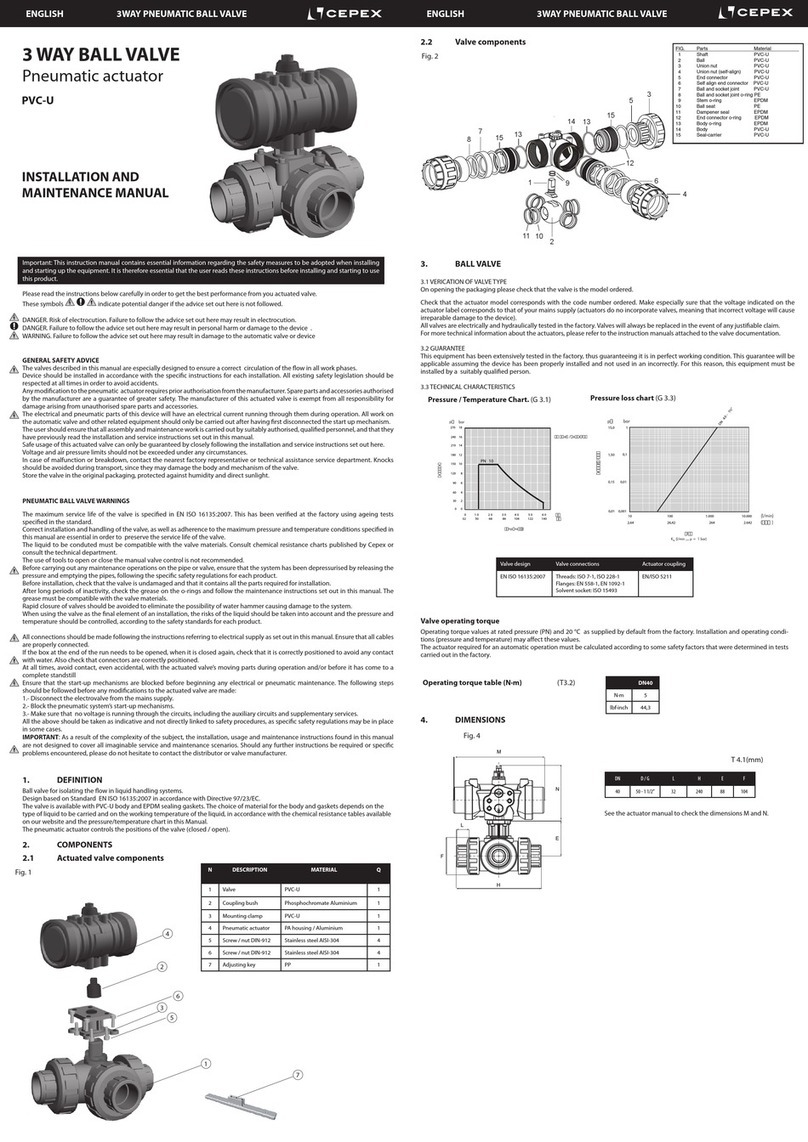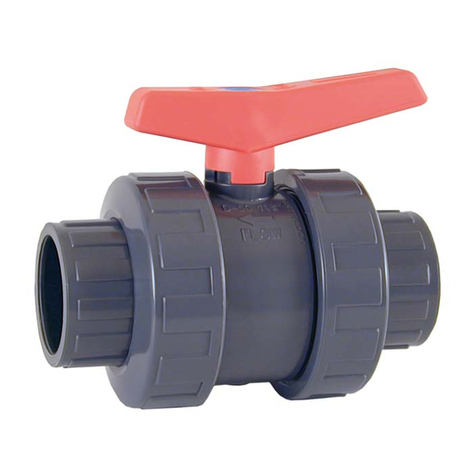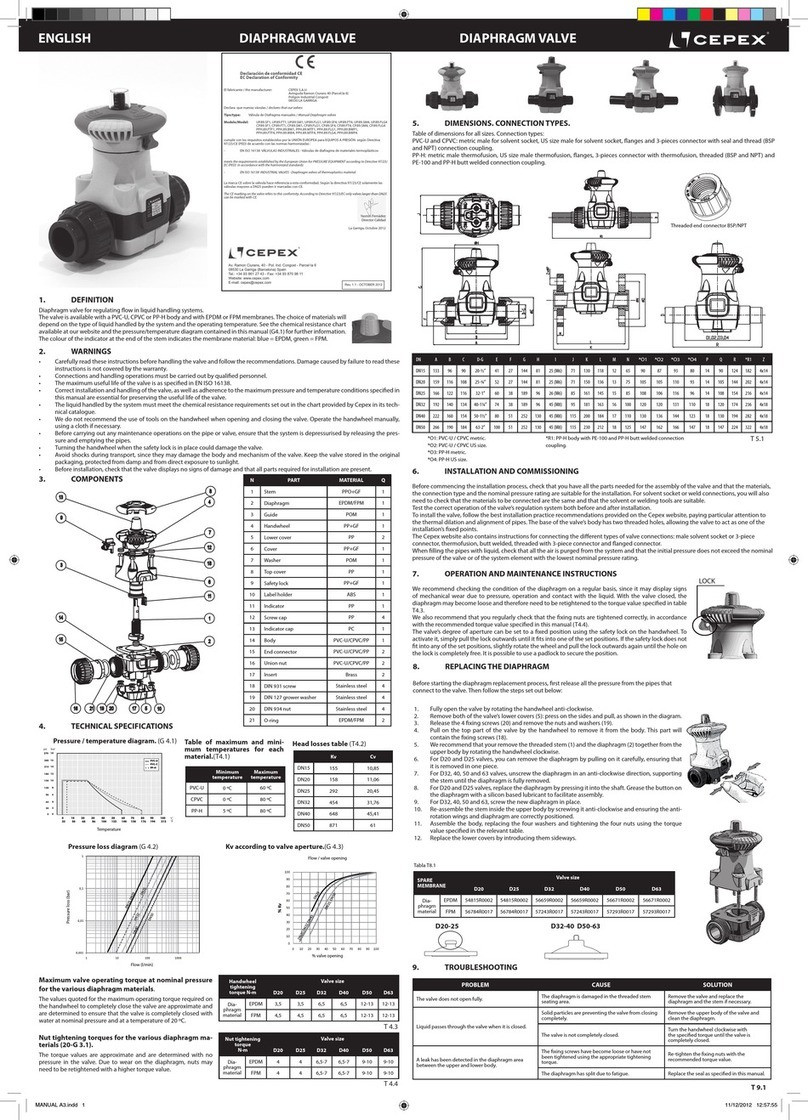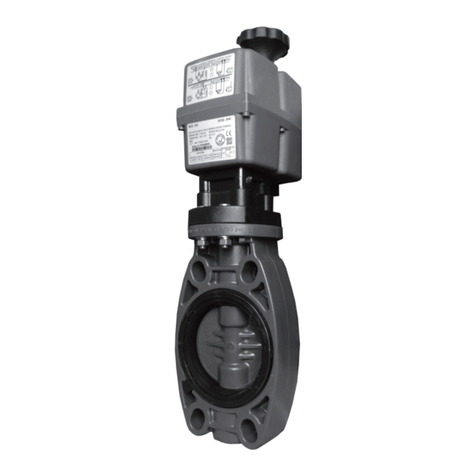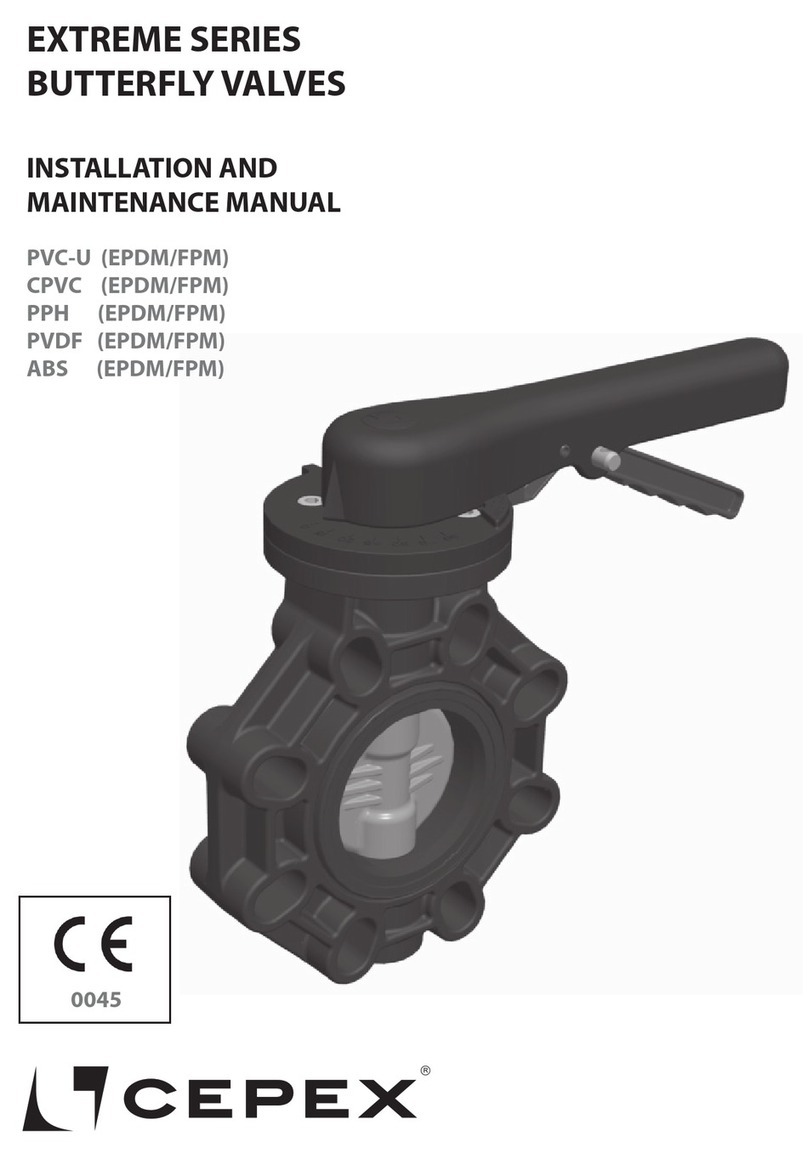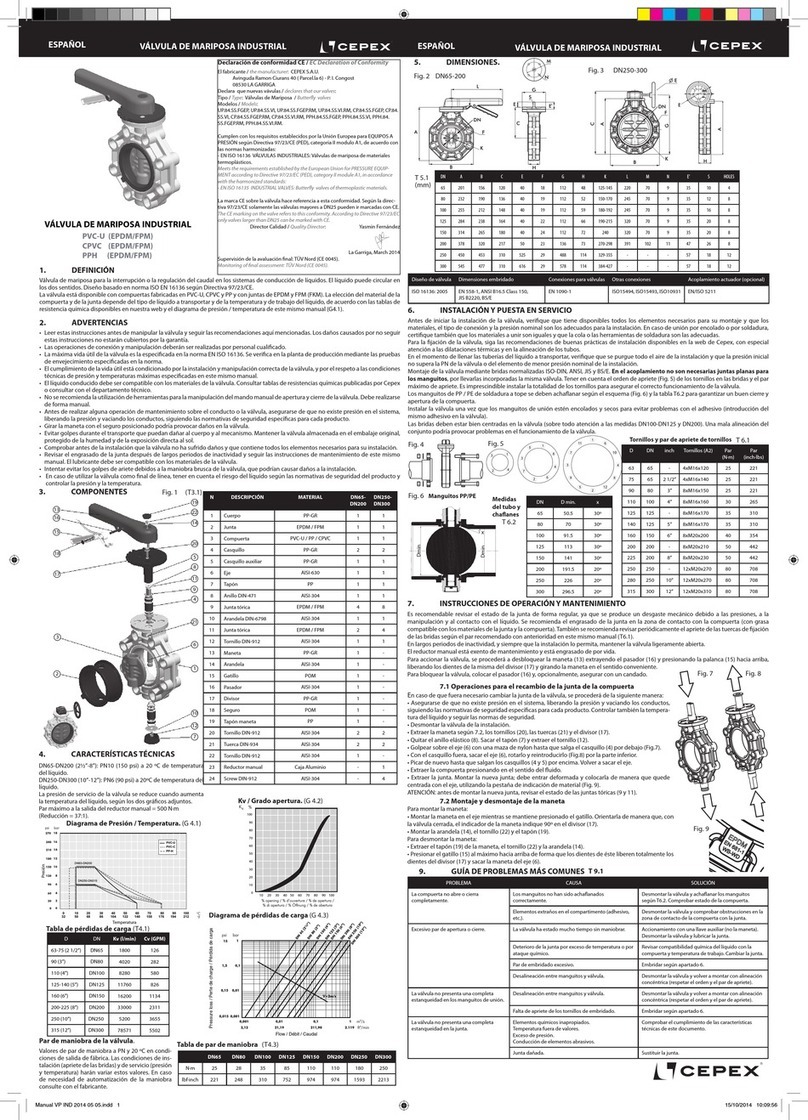
3
EXTREME PNEUMATIC BUTTERFLY VALVE LUG TYPE
Important: This instruction manual contains essential information regarding safety measures to be adopted when installing and start-
ing up the equipment. It is therefore essential that the user reads these instructions before installing and starting to use this product.
Please read the instructions below carefully in order to get the best performance from you actuated valve.
These symbols indicate potential danger if the advice set out here is not followed.
DANGER. Risk of electrocution. Failure to follow the advice set out here may result in electrocution.
DANGER. Failure to follow the advice set out here may result in personal harm or damage to the device
WARNING. Failure to follow the advice set out here may result in damage to the automatic valve or device.
GENERAL SAFETY ADVICE
The valves described in this manual are especially designed to ensure a correct circulation of the ow in all work phases.
Device should be installed in accordance with the specic instructions for each installation. All existing safety legislation should be
respected at all times in order to avoid accidents.
Any modication to the pneumatic actuator requires prior authorisation from the manufacturer. Spare parts and accessories
authorised by the manufacturer are a guarantee of greater safety. The manufacturer of this actuated valve is exempt from all
responsibility for damage arising from unauthorised spare parts and accessories.
The electrical and pneumatic parts of this device will have an electrical current running through them during operation. All work on
the automatic valve and other related equipment should only be carried out after having rst disconnected the start up mechanism.
The user should ensure that all assembly and maintenance work is carried out by suitably authorised, qualied personnel, and that
they have previously read the installation and service instructions set out in this manual.
Safe usage of this actuated valve can only be guaranteed by closely following the installation and service instructions set out here.
Voltage and air pressure limits should not be exceeded under any circumstances.
In case of malfunction or breakdown, contact the nearest factory representative or technical assistance service department. Knocks
should be avoided during transport, since they may damage the body and mechanism of the valve.
Store the valve in the original packaging, protected against humidity and direct sunlight.
PNEUMATIC BUTTERFLY VALVE WARNINGS
The maximum service life of the valve is specied in EN ISO 16136. This has been veried at the factory using ageing tests specied
in the standard.
Correct installation and handling of the valve, as well as adherence to the maximum pressure and temperature conditions specied
in this manual are essential in order to preserve the service life of the valve.
The liquid to be conduted must be compatible with the valve materials. Consult chemical resistance charts published by Cepex or
consult the technical department.
The use of tools to open or close the manual valve control is not recommended.
Before carrying out any maintenance operations on the pipe or valve, ensure that the system has been depressurised by releasing
the pressure and emptying the pipes, following the specic safety regulations for each product.
Before installation, check that the valve is undamaged and that it contains all the parts required for installation.
After long periods of inactivity, check the grease on the o-rings and follow the maintenance instructions set out in this manual. The
grease must be compatible with the valve materials.
Rapid closure of valves should be avoided to eliminate the possibility of water hammer causing damage to the system.
When using the valve as the nal element of an installation, the risks of the liquid should be taken into account and the pressure and
temperature should be controlled, according to the safety standards for each product.
All connections should be made following the instructions referring to electrical supply as set out in this manual. Ensure that all
cables are properly connected.
If the box at the end of the run needs to be opened, when it is closed again, check that it is correctly positioned to avoid any contact
with water. Also check that connectors are correctly positioned.
At all times, avoid contact, even accidental, with the actuated valve’s moving parts during operation and/or before it has come to
a complete standstill
Ensure that the start-up mechanisms are blocked before beginning any electrical or pneumatic maintenance. The following steps
should be followed before any modications to the actuated valve are made:
1.- Disconnect the electrovalve from the mains supply.
2.- Block the pneumatic system’s start-up mechanisms.
3.- Make sure that no voltage is running through the circuits, including the auxiliary circuits and supplementary services.
All the above should be taken as indicative and not directly linked to safety procedures, as specic safety regulations may be in
place in some cases.
IMPORTANT: As a result of the complexity of the subject, the installation, usage and maintenance instructions found in this manual
are not designed to cover all imaginable service and maintenance scenarios. Should any further instructions be required or specic
problems encountered, please do not hesitate to contact the distributor or valve manufacturer.
We strongly recommend to x the valve with ange adaptor and loose ange in both sides of the valve to keep the technical
characteristics of the valve.
In case of xing only the valve with screws from one side, the maximum supported pressure will be reduced in some factor (f = 0,4).
Please ask to Cepex technical department for the specic conditions of installation and possible changes in the performance of the valve.
